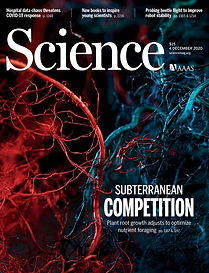Selected publications
Akt is a mediator of artery specification during zebrafish development
Wenping Zhou*, Joey J. Ghersi*#, Emma Ristori, Nicole Semanchik, Andrew Prendergast, Rong Zhang, Paola Carneiro, Gabriel Baldissera, William C. Sessa, Stefania Nicoli#
Development (2024) 151 (17): dev202727.
doi.org/10.1242/dev.202727
The dorsal aorta (DA) is the first major blood vessel to develop in the embryonic cardiovascular system. Its formation is governed by a coordinated process involving the migration, specification, and arrangement of angioblasts into arterial and venous lineages, a process conserved across species. Although vascular endothelial growth factor a (VEGF-A) is known to drive DA specification and formation, the kinases involved in this process remain ambiguous. Thus, we investigated the role of protein kinase B (Akt) in zebrafish by generating a quadruple mutant (aktΔ/Δ), in which expression and activity of all Akt genes – akt1, -2, -3a and -3b – are strongly decreased. Live imaging of developing aktΔ/Δ DA uncovers early arteriovenous malformations. Single-cell RNA-sequencing analysis of aktΔ/Δ endothelial cells corroborates the impairment of arterial, yet not venous, cell specification. Notably, endothelial specific expression of ligand-independent activation of Notch or constitutively active Akt1 were sufficient to re-establish normal arterial specification in aktΔ/Δ. The Akt loss-of-function mutant unveils that Akt kinase can act upstream of Notch in arterial endothelial cells, and is involved in proper embryonic artery specification. This sheds light on cardiovascular development, revealing a mechanism behind congenital malformations.
Haematopoietic stem and progenitor cell heterogeneity is inherited from the embryonic endothelium
Joey J. Ghersi, Gabriel Baldissera, Jared Hintzen, Stephanie A. Luff, Siyuan Cheng, Ivan Fan Xia, Christopher M. Sturgeon & Stefania Nicoli
Nature Cell Biology volume 25, pages 1135–1145 (2023)
doi.org/10.1038/s41556-023-01187-9

Definitive haematopoietic stem and progenitor cells (HSPCs) generate erythroid, lymphoid and myeloid lineages. HSPCs are produced in the embryo via transdifferentiation of haemogenic endothelial cells in the aorta–gonad–mesonephros (AGM). HSPCs in the AGM are heterogeneous in differentiation and proliferative output, but how these intrinsic differences are acquired remains unanswered. Here we discovered that loss of microRNA (miR)-128 in zebrafish leads to an expansion of HSPCs in the AGM with different cell cycle states and a skew towards erythroid and lymphoid progenitors. Manipulating miR-128 in differentiating haemogenic endothelial cells, before their transition to HSPCs, recapitulated the lineage skewing in both zebrafish and human pluripotent stem cells. miR-128 promotes Wnt and Notch signalling in the AGM via post-transcriptional repression of the Wnt inhibitor csnk1a1 and the Notch ligand jag1b. De-repression of cskn1a1 resulted in replicative and erythroid-biased HSPCs, whereas de-repression of jag1b resulted in G2/M and lymphoid-biased HSPCs with long-term consequence on the respective blood lineages. We propose that HSPC heterogeneity arises in the AGM endothelium and is programmed in part by Wnt and Notch signalling.
The N-glycome regulates the endothelial-to-hematopoietic transition
Dionna M. Kasper, Jared Hintzen, Yinyu Wu, Joey J. Ghersi, Hanna K. Mandl, Kevin E. Salinas, William Armero, Zhiheng He, Ying Sheng, Yixuan Xie, Danie W. Heindel, Eon Joo Park, William C. Sessa, Lara K. Mahal, Carlito Lebrilla, Karen K Hirschi, and Stefania Nicoli.
Science, 4 December 2020, Vol 370, Issue 6521, pp. 1186-1191.
doi.org/10.1126/science.aaz2121

Definitive hematopoietic stem and progenitor cells (HSPCs) arise from the transdifferentiation of hemogenic endothelial cells (hemECs). The mechanisms of this endothelial-to-hematopoietic transition (EHT) are poorly understood. We show that microRNA-223 (miR-223)–mediated regulation of N-glycan biosynthesis in endothelial cells (ECs) regulates EHT. miR-223 is enriched in hemECs and in oligopotent nascent HSPCs. miR-223 restricts the EHT of lymphoid-myeloid lineages by suppressing the mannosyltransferase alg2 and sialyltransferase st3gal2, two enzymes involved in protein N-glycosylation. ECs that lack miR-223 showed a decrease of high mannose versus sialylated sugars on N-glycoproteins such as the metalloprotease Adam10. EC-specific expression of an N-glycan Adam10 mutant or of the N-glycoenzymes phenocopied miR-223 mutant defects. Thus, the N-glycome is an intrinsic regulator of EHT, serving as a key determinant of the hematopoietic fate.
bif1, a new BMP signaling inhibitor, regulates embryonic hematopoiesis in the zebrafish
Joey J. Ghersi, Christopher B. Mahony, Julien Y. Bertrand
Development (2019) 146 (6): dev164103.
doi.org/10.1242/dev.164103

Hematopoiesis maintains the entire blood system, and dysregulation of this process can lead to malignancies (leukemia), immunodeficiencies or red blood cell diseases (anemia, polycythemia vera). We took advantage of the zebrafish model that shares most of the genetic program involved in hematopoiesis with mammals to characterize a new gene of unknown function, si:ch73-299h12.2, which is expressed in the erythroid lineage during primitive, definitive and adult hematopoiesis. This gene, required during primitive and definitive erythropoiesis, encodes a C2H2 zinc-finger protein that inhibits BMP signaling. We therefore named this gene blood-inducing factor 1 and BMP inhibitory factor 1 (bif1). We identified a bif1 ortholog in Sinocyclocheilus rhinocerous, another fish, and in the mouse genome. Both genes also inhibit BMP signaling when overexpressed in zebrafish. In conclusion, we have deorphanized a new zebrafish gene of unknown function: bif1 codes for a zinc-finger protein that inhibits BMP signaling and also regulates primitive erythropoiesis and definitive hematopoiesis.